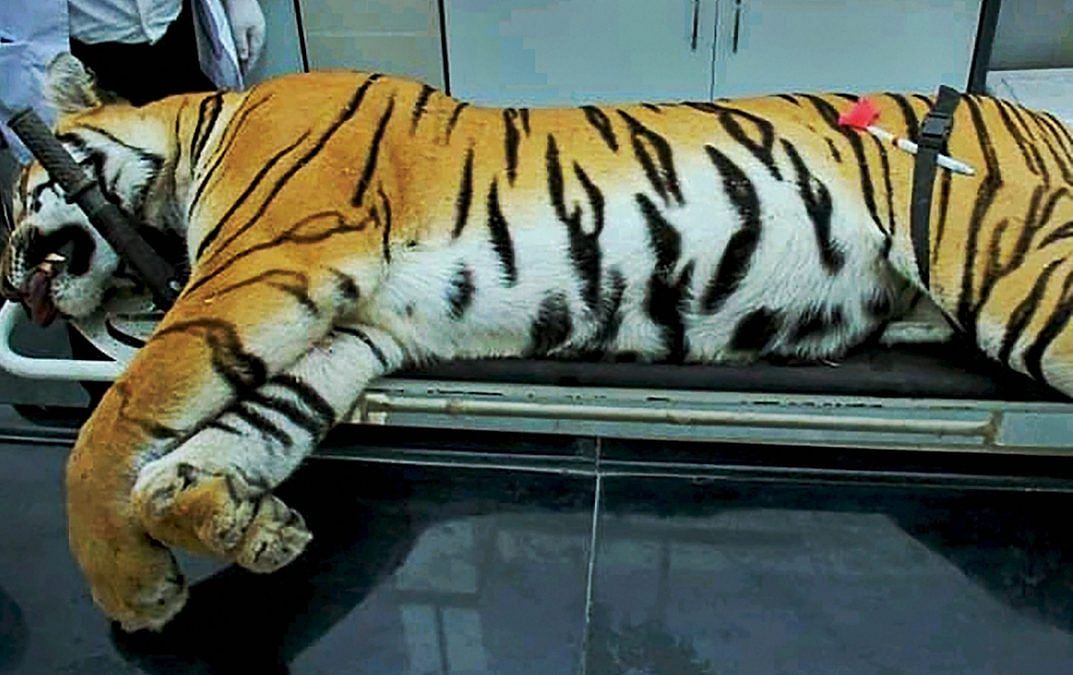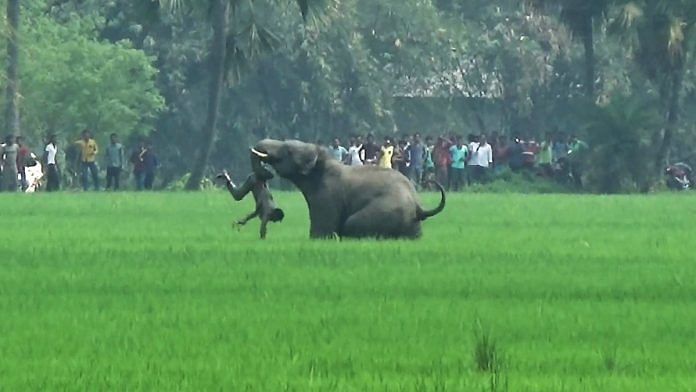Increasing human and animal population, shrinking forests etc. have made the conflict inevitable. But it’s not as though there are no solutions.
New Delhi: Killings, retaliatory killings, battles for territory, battles for survival.
We aren’t talking about a political battleground, we are referring to a deadly conflict between human beings and animals in India, which has the potential to turn into a full-blown war. And what’s more, the government has only just begun to take note.
Last week, when six-year old tigress Avni, accused of killing 13 human beings, was shot dead by a private hunter’s son in the Pandharkawada region of Maharashtra, there was an outpouring of grief, anger, and protests from several quarters.
Is retaliation the only answer to human-animal conflict? As the human population grows, forest cover shrinks, and humans and animals begin to compete and jostle for the same, limited resources, do we have the necessary wherewithal to contain the problem?
Just a day after Avni was killed, another tigress in Uttar Pradesh was run over and beaten to death by angry villagers after she mauled a 50-year-old man. On the same day, a leopard snuck into the Gujarat secretariat and the sprawling complex had to be cordoned off.
A week before that, seven elephants died of electrocution in Odisha — a state often known as a “graveyard” for elephants. An adult female elephant was deliberately electrocuted in the state’s Rourkela forest division for frequently damaging crops in the area. The killing was labelled a “revenge killing” — an increasingly common phenomenon as human-animal conflict gradually becomes the order of the day.
According to the Environment Ministry, 1,608 human beings were killed between 2014 and 2017 due to this conflict — an average of more than one human being every day.
Of these, most lives are claimed by tigers, elephants, snakes, leopards and bears.
There is no government data on the deaths of animals due to human-animal conflict.
Also read: Autopsy of tigress Avni suggests foul play, discredits self-defence theory
Why is this conflict increasing?
There are many reasons — human population explosion, shrinking forest cover, poaching, rapid and unplanned urbanisation, which entails electrification penetrating into forest areas, increasing road density, destruction of natural animal corridors, agricultural expansion and cultivation up to forest boundaries.
“The population is growing at a massive rate… Obviously, our land and borders are not expanding, so the problem is obvious and inevitable, which means, at best, we can only delay the disaster. But it’s going to come,” says conservationist Valmik Thapar.

As city land continues to become inadequate for growing human needs, boundaries are pushed into the forest land, making wetlands and forest patches dry up. Wildlife, thus, is disturbed, homeless and starved.
Consider the example of Delhi. According to the State of the Forest Report 2017, Delhi has lost about 0.2 sq km of very dense forest and 0.9 sq km of moderately dense forest since 2015. Moreover, according to the NCR Planning Board, over 32,000 hectares of green areas were lost from 1999-2012.
The consequences are obvious. Complaints of conflicts with monkeys, leopards, snakes, monitor lizards, civet cats and birds have seen a huge jump in the NCR region.
Also read: Man-dog conflict in UP’s Sitapur: Administration accused of having blood on its hands
Collateral damage of conservation
According to the government, however, the increasing human-animal conflict is also partially a result of its success in increasing the animal population in the last few years.
“India is one of the only countries which is guided by the principle of conservation…We kill animals only if it is the very last resort and there is no option left,” said Siddhanta Das, director-general of forests. “But that means that animals want more resources, and so do human beings, so this conflict is inevitable.”
The claim is not unfounded. India hosts up to 70 per cent of the world’s tiger population, and saw their total population increase from 1,411 in 2006 to 2,226 in 2014, as per the All India Tiger Estimation. Couple this with the increase in human population, and the problem is an obvious one.

The theory of collateral damage, though, hardly explains the rising conflict with species whose population is declining. For instance, India has lost nearly 10 per cent of its elephant population since the last census conducted in 2012.
Therefore, it would be foolhardy to put the blame on successful conservation efforts alone, argues Indian Forest Service officer Parveen Kaswan.
Explaining the increase in conflict with elephants, he says: “Elephants live in big families — even up to 100 elephants in one herd. They keep moving from forest to forest in search of food and water. But now, forests are no more connected, since we have destroyed the corridors for their movement. And that is why they are being killed on roads, railway lines and by electricity lines.”
According to a report published by the Wildlife Trust of India (WTI) in 2017, national and state highways cut across over two-thirds of the 101 elephant corridors in India.
Land diversion
Although the government has an elaborate set of guidelines on the basis of which forest land can be diverted for non-forest purposes, diversion continues to take place for practices such as mining, road and highway construction and other developmental work.
In the midst of the Avni brouhaha, the Maharashtra government’s Forest Advisory Committee (FAC) reportedly cleared a 87.98-hectare defence manufacturing project for explosives company Solar Industries India Ltd (SIIL) in Chakdoh, in a tiger-bearing forest.
Also read: Talk Point: Are rhinos ‘overpopulated’ or is their habitat shrinking?
Solutions
Government responses to the problem remain inadequate. In an answer to the Lok Sabha in February this year, Minister of State for Environment Mahesh Sharma said there is no data indicating a surge in human-animal conflict in the past few years. Sharma admitted that no specific study had been conducted by the government to ascertain the reasons for such conflict.
Over the last two years, the government has come up with some policies to grapple with the problem: The compensation for human deaths has been increased from Rs 2.5 lakh to Rs 5 lakh; Project Elephant and National Tiger Conservation Authority (NTCA) guidelines have been issued to mitigate the conflict; and immune-contraception has been introduced in order to control the population of nilgai, monkeys and wild boars.
“The idea is to find a trade-off point where we can look after the interests of both human beings and animals… A lot of countries indulge in culling and farming of animals. For us that is a strict no-no, so it gets trickier,” says Das.
However, experts argue that the problem is not of preferring conservation over killing, but the ad-hocism with which the problem is approached.
“Every state should have rescue units that are permanently manned — have a vehicle, a veterinarian, a tranquilising gun,” says Thapar. “You have to let your own professionals deal with these issues.”
Moreover, increasingly, India will need rescue centres for problem animals. “Once an animal turns into a man-eater, it has to be put in a jail the way criminals are, but those jails should be comfortable, large enclosures, not zoos,” he says.
However, this is easier said than done, explained a forest officer who did not want to be named. “We have vacancies across the forest department, which the government does not want to fill. We don’t have the staff for the existing teams. How do we make separate rescue units or animal crisis centres?”




